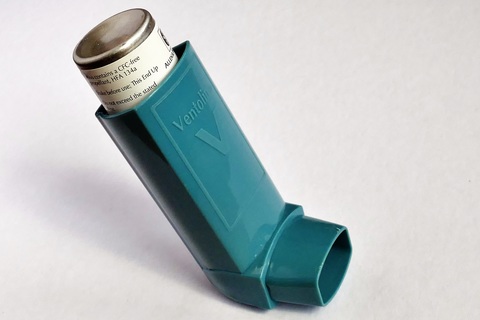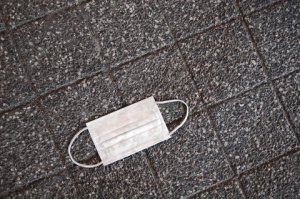There is no denying that a campfire is cozy, inviting and makes any occasion a special treat. Research shows that regular inhalation of wood smoke limits immune activity and function.
Central Florida Indoor Air Quality Testing
In today’s energy efficient world, buildings are made more airtight, and individual control over one’s environment, i.e., open windows, is less common. Businesses often reside in buildings that were not designed for their type of occupancy; operations frequently change without ventilation considerations.
Causes of IAQ problems:
- Conditions such as inadequate ventilation
- Heating and cooling issues
- Mold
- Vehicle and/or chemical odours
- Water Leaks
Can all cause indoor air quality (IAQ) problems and trigger employee concerns and complaints. Facility emergencies create the need for immediate response and loss mitigation. Markham Services has experience in finding cost-effective solutions to a wide range of indoor air quality challenges.
We have worked with:
- Residential,
- Commercial
- Municipal
- Educational Facilities
On a variety of air quality and mold projects. Health effects from indoor air pollutants may be experienced soon after exposure or, possibly, years later. There is considerable uncertainty about what concentrations or periods of exposure are necessary to produce specific health problems. We offer services for Residential and Businesses in the central Florida area. To learn more about indoor air quality visit the EPA’s Site for Indoor Air Quality.

A survey conducted by the EPA found that people in the U.S. spend 69% of their time at home. It’s therefore crucial that indoor air remains clean and healthy.
The air we breathe directly affects our health and, in turn, the quality of our lives. If the air that you breathe is contaminated by contaminants such as mold spores and radon, your health and safety is at risk.
Besides, you may also have a moisture intrusion problem as well. So, you must always ensure that the quality of the air you breathe indoors is healthy and safe.
Sick and tired of feeling sick and tired? Markham Services is here to lend a helping hand. From mold inspections to mold testing to indoor air quality testing, we do it all!
Facts about Indoor Air Quality
It’s estimated that most people spend 90% of their time indoors. This includes time spent at school, work, and obviously, at home. The following are ten facts you should know about indoor air quality that you probably didn’t know about.
The range of indoor air pollutants includes radon, pet dander, pollen, mold, PBDEs, phthalates, VOCs, and more. Majority of these are fine or ultra-fine particulate matter that is easily inhaled and can pass into the bloodstream, and even cross the blood-brain barrier.
A Portuguese study found that elderly patients in elderly care centers faced exposure to high concentrations of fungus which could negatively affect their respiratory health.
Since the early 1980s, the occurrence of asthma has been on the rise for everyone – all ages, classes, and races. Simply put, asthma is a silent epidemic that has a disastrous effect on quality of life.

Schools accommodate up to four times more occupants, aka students than a standard office building with the same amount of floor space. Even more alarming is the fact that children breathe more air relative to their body weight than adults.
Printing inks, like those used in home printers, contain glymes. These industrial chemicals have been linked to development and reproductive damage.

Most candles, especially the scented ones, contain benzene and toluene, two known carcinogens. When you burn toxic candles in your home, you’re releasing toxic chemicals.
The NRDC determined most air fresheners contain phthalates, noxious chemicals known to disrupt hormone function in babies and children. They also aggravate respiratory ailments such as asthma and interfere with reproductive development.
Furniture purchased prior to 2006 contained toxic PBDEs – chemicals used as flame retardants. These flame retardants have the possibility of sending toxins into the air.
The United States EPA ranks indoor air quality as a top five environmental risk to public health. EPA studies found indoor air pollutants were generally 2 to 5 times greater than outdoor pollution levels.
What Causes Poor Indoor Air Quality?
According to the Environmental Pollution Agency (EPA), the following are the most common sources of indoor air contaminants.
- Photocopiers, electric motors, air cleaners (ozone)
- Damp areas (mold, bacteria, fungi)
- Carpets and fabrics (dust mites)
- Off-gas emissions from carpets, furniture, and paints (gases, vapors, odors)
- Cleansers/solvents/pesticides, etc. (VOCs, toxic vapors)
- Materials (dust, gases, asbestos, fiberglass)
- Occupants (tobacco smoke, perfume, body odors, CO2)
At home, dampness, insufficient ventilation, and off-gassing are the most likely causes of poor indoor air quality.
What are Examples of Indoor Pollutants?

An indoor air pollutant, broadly put, is any kind of airborne substance that can cause adverse health effects. Examples of these include:
- Lead
- Ozone
- Asbestos
- Formaldehyde
- Nitrogen Dioxide
- Carbon Monoxide
- Bacteria (such as Legionella)
- Dust Mites
- Pollen (aeroallergens)
- Fungi
- Mildew
- Mold
- Particulate matter
- Radon
Indoor Air Quality & Mold
If your home isn’t ventilated well, it can set up a veritable breeding ground for mold. Mold is usually referred to as an ”invisible killer.” This is because it’s harder to realize when you are breathing it.
Even spotting it sometimes can be a problem. You may need to conduct Mold Inspection or a Mold Test. Mold spores tend to spread inside carpets and fabrics, underneath floors, and behind walls. Left undetected, mold can end up destroying entire floors, ceilings, walls and even the structural components of a building.
Improving Indoor Air Quality
Fortunately, it’s possible to monitor and improve your home’s indoor air quality. The first step should be to get professional help from the local mold technicians at Markham.

Markham Services has years of experience in finding cost-effective solutions to a wide range of indoor air quality challenges. We have worked with residential, commercial, municipal and educational facilities on a variety of air quality and mold projects.
Health effects from indoor air pollutants may be experienced soon after exposure or, possibly, years later. There is considerable uncertainty about what concentrations or periods of exposure are necessary to produce specific health problems.
If you live in the central Florida area and suspect you have poor indoor air quality, contact us as soon as possible. If left unattended, poor indoor air quality can pose a real threat to you and your loved ones. We conduct indoor air quality testing in Central Florida and Lutz.


